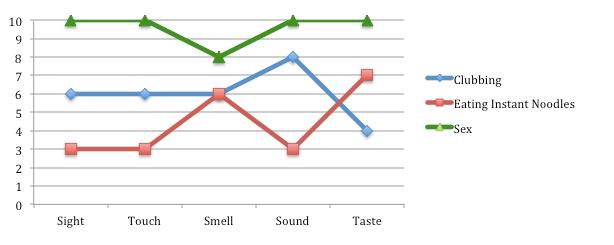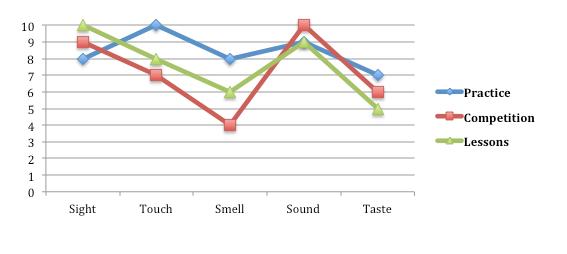Jinsop Lee – Why is sex so damn good? (TED 2013)
Comments from Magda Schoeneich
…and what about dancing?
Lee tells us the story of a university challenge to create a clock. Lee’s design involved a sunflower that turned toward the sun; his friend comprised five magnifying glasses with a shot glass of scented oil under each one. During the course of the day, five different scents would disperse to let people know the time of day just by smell. “I thought my idea was pretty good; his idea is genius,” says Lee. Years later, a friend of Lee’s suggested to him that
maybe sex is so damn good because of the five senses.
He decided to start documenting the impact of various experiences on the five senses.
He took a motorcycle ride around Seoul and charted the quality of sights (5), sounds (5), smells (3) and tastes (0).
But do all activities engage all of our senses? To a degree yes, we might not be fully aware of it, as we tend to focus on the most pronounced ones (e.g., taste when eating, or sound when listening to the music). However once we pay closer attention to the other senses our experience becomes much more holistic and “better”.
Later, Lee extended this still-unscientific experiment to gather data from his friends and students, charting the impact of activities such as eating instant noodles (note the sound of slurping) or clubbing (and the unexpected pleasures of kissing).
Over a hundred different activities have been evaluated and constantly, the one coming to the top was sex.

As I am listening to his talk I can’t stop thinking about dancing. I want to ask if any one charted it but the time runs out and Lee is off the stage. Later that evening I think about the way I would have charted dancing? Would it change depending on the circumstances? Would the practice chart differ from the competition one? What about the lessons?
Is it possible to find the perfect balance of all the senses working on a high level so that when we dance we feel as great as while having sex?
The chart below is based on a very small sample size (literally n=1, myself) and rather distant memories when it comes to competitions or lessons. But even with that I can see some differences, which to be honest, I don’t think I have ever paid attention to…











